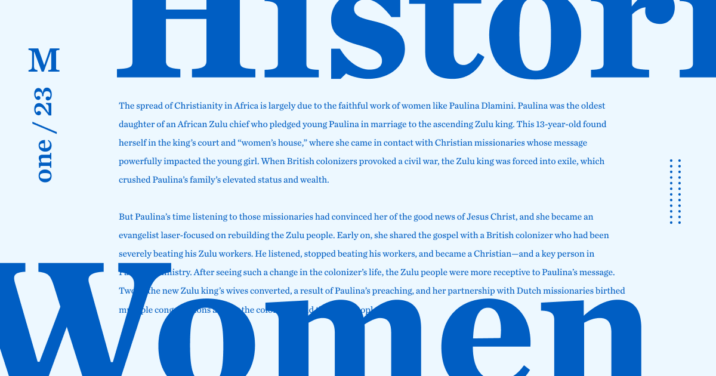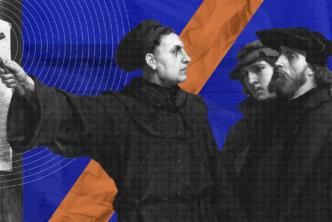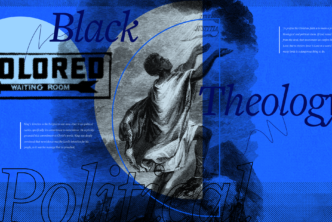It’s women’s history month—and March 8 was International Women’s Day. To celebrate, we’re highlighting 20 Christian women in Church history who served God in both extraordinary and ordinary ways.
1. Priscilla (first century AD)
Though the Bible doesn’t tell us much about Priscilla’s role in the church, it’s clear from Acts 18 she was a faithful minister for Christ alongside her husband, Aquila. They met Paul in Corinth, where they established the Corinthian church—which eventually met in their home. They later left Corinth to plant another church with Paul in Ephesus, where they met a young preacher named Apollos. Apollos believed John the Baptist’s prophecies but didn’t understand the death and resurrection of Jesus. Acts 18:26 says Priscilla and Aquila “explained to him the way of God more adequately.” In Ephesus, the couple established another church in their home, exemplifying the importance of hospitality in the growth of the infant church.
2. Phoebe (first century AD)
Though she’s found only once in the Bible, Phoebe was one of the earliest female believers mentioned in Scripture. Her life impacted many people—including Paul, who referred to her as “our sister” (Rom 16:1). Paul used two Greek words that shed light on who Phoebe was. Diakonos (“servant”) in Romans 16:1 suggests Phoebe may have held the office of deaconess in the church at Cenchrea,1and prostatis (“helper”) could mean Phoebe was a patron who supported Paul financially”2 or that she showed kindness to other believers. Regardless, Paul trusted Phoebe to deliver his letter to the Romans to Rome, and he charged the Romans to “help her in whatever she may need from you” (Rom 16:2).
3. Thecla (second century AD)
Although the Bible never mentions Thecla—and though some scholars think her story is nothing more than a fable spread by word of mouth among the early church—her story surfaces in the apocryphal writing of the Acts of Thecla (and also the Acts of Paul and Thecla), so it deserves attention. Thecla was a noble Egyptian woman from modern-day Turkey who heard the apostle Paul’s message and was so overwhelmed she didn’t eat for days. She was particularly attracted to his call to celibacy and chastity and immediately converted—renouncing her family and fiance, who rejected her and promptly attempted to burn her to death. Thecla miraculously survived and followed Paul from Iconium to Antioch, where, so the story goes, she was nearly raped and then arrested for fighting off her attacker. Thecla’s disavowment of her upcoming marriage was a threat to the Roman Empire, which expected young women to marry and become mothers. Yet this was not the case in the early church, which revered her choice to remain chaste.3
4. Perpetua (c. AD 181–203)
Perpetua, one of the first female African martyrs of the early Church, was born around 181 in Carthage, North Africa (Tunisia). She lived during a time when Rome had been persecuting Christians all over the Empire, and accepting Jesus or becoming Jewish was punishable by death. Nonetheless, Perpetua (who at the time had a young child) was baptized. She was eventually arrested for her faith, refusing to be called anything other than a Christian.4
On the day of her trial, her father showed up with her infant son, pleading with her to recant her faith in Jesus for the sake of the child. She refused and was thrown in the arena to the wild animals. When the crowd grew impatient for her death, Perpetua and the other prisoners with her were lined up and killed by the sword.5
5. Monica (c. 331–387)
Monica was Augustine’s mother and considered by him to be the driving force in his salvation. She was born in a Christian family in Tagaste, North Africa. Her faith, prayers, and Christlike life influenced her entire family to become Christians—including her husband Patricius, a Roman pagan. Augustine is the best known of Monica’s children, converted in Milan in 384 just three years before Monica died. Her life has inspired many works of literature and art; a painting of her and Augustine hangs in the National Gallery of Art in London.6
6. Clare of Assisi (1194–1253)
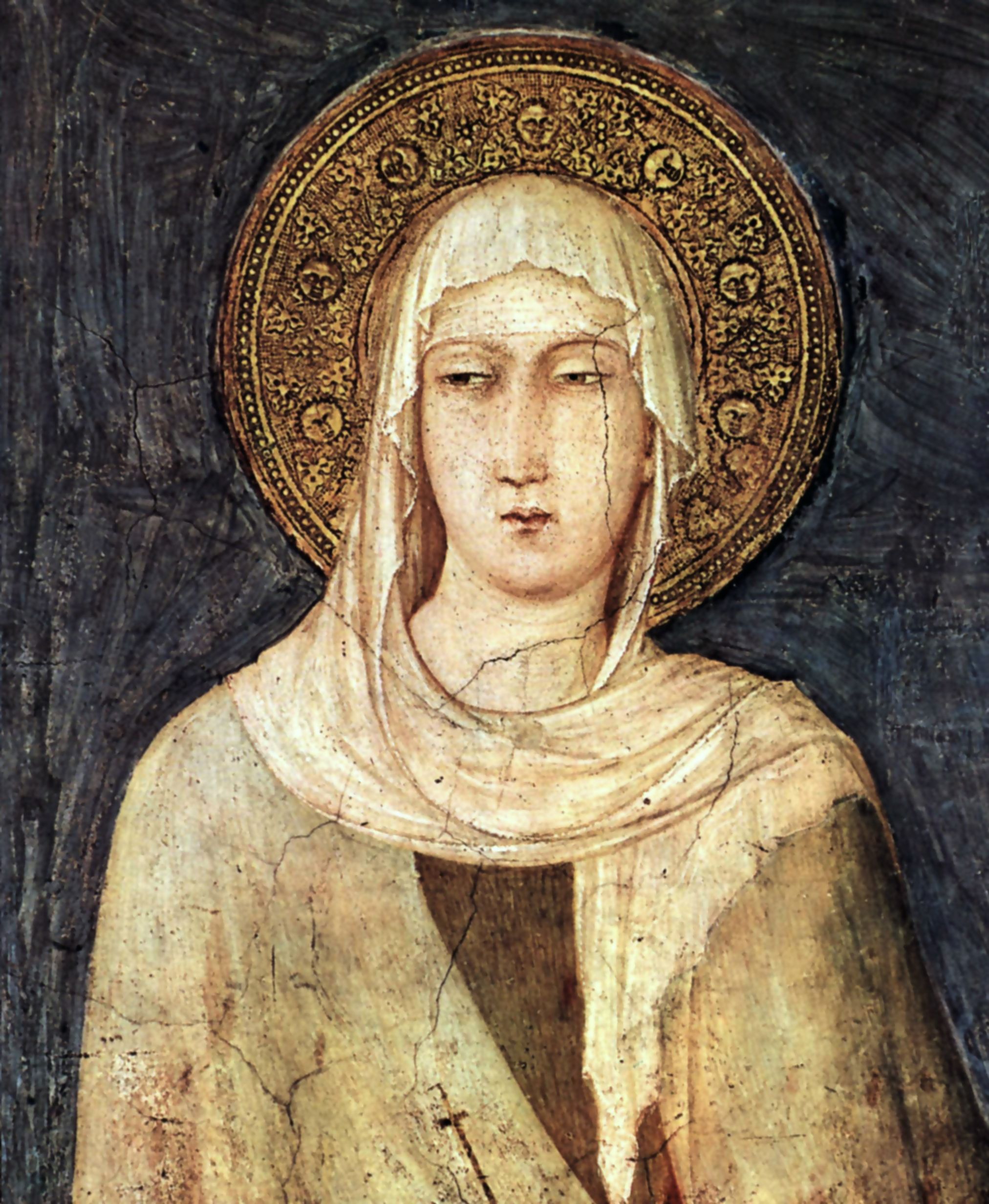
Born into a wealthy Italian family of high status, Clare was the oldest of three girls. Her mother was religious and taught the girls about Jesus, which impacted Clare, who deeply loved Jesus and was noted for her dedication to prayer. By the time she was seventeen, her father had arranged her marriage to a wealthy man, but Clare, grieved by the poor in her community and wanting to do something about it, refused to marry him. After hearing St. Francis of Assisi teach, she was so moved that, at age eighteen, she gave up her worldly possessions and joined him at the Portiuncula (a small Catholic church within the Basilica of Saint Mary in Assisi where the Franciscan movement started), becoming one of his Francis’ first followers.7
Clare founded a monastic religious order called the Order of Poor Ladies (today known as the “Poor Clares”) who lived a life focused on “prayer, community and joy.”8 When other women wanted to join the order (including her mother and sister), Francis of Assisi made her abbess, a position she held until her death. Clare believed the privileged world she had been surrounded by, though it appeared exciting, “passes like a shadow” and one she later taught “should not disturb you.”9 Her legacy lives on today, and her life reflects the importance of women to the Franciscan story.
7. Marie Dentiere (c. 1495–1561)
Though not much is known of her early life, we do know Marie Dentiere was born in Tournai (modern Belgium) to a wealthy family and that she entered an Augustinian nunnery in 1508. She converted to the Reformation and fled Tournnai to Strasbourg in 1524 to escape resulting persecution. There she met and married a young priest, and together they tirelessly preached in favor of the Reformation. She was also passionate about a larger role for women in the Church, which angered Genevan authorities. She is the only woman named on the Reformation Wall in Geneva, a 100-meter stone monument that honors people, events, and documents of the Protestant Reformation.
8. Margaret Fell Fox (1614–1702)
Margaret married Thomas Fell, a wealthy lawyer and eventual Justice of the Peace and member of England’s Parliament. She and her husband used their large estate (Swarthmoor Hall) for God’s service, often hosting traveling ministers. In 1652 she met George Fox, a preacher who had gained a following known as the Society of Friends—what we know today as Quakers—who had come to stay at the estate.10
His teaching impacted her so much that she became active in the Society, hosting meetings at Swarthmoor and fighting for religious freedom. She penned many religious pamphlets and letters, including her famous Women’s Speaking Justified by the Scriptures in which she unpacks passages from Genesis through Revelation that “promote women in ministry and the equality of the sexes in the power and authority of the Spirit.”11 After her husband passed in 1658, Margaret continued to host Society meetings in her home until she was arrested in 1664 and sentenced to life in prison. After her release four-and-a-half-years later, she married George Fox, and together they traveled and preached until his death in 1691.
9. Kateri Tekakwitha (1656–1680)
Kateri Tekakwitha was born in 1656, the daughter of a Mohawk chief. She lost both parents to a smallpox outbreak when she was four. When French missionaries arrived to convert the Native Americans, Kateri grew interested in the faith. She completed catechism classes and was baptized on Easter Sunday, 1676—only to be treated poorly by her tribe. She escaped from her village in 1677 with the help of other Native American Christians to Saint Francis Xavier Mission in Montreal, Canada. There she met Anastasie Tegonhatsiongo who would become her spiritual mentor. Kateri decided she should become a nun. She and two other women fought to start an all Native American convent but were denied. Still, she took monastic vows on March 25, 1679, and “dedicated the rest of her short life to prayer, penance, and care for the sick and elderly.”12
10. Sojourner Truth (1797–1883)

In her dictated autobiography The Narrative of Sojourner Truth, she said God renamed her “Sojourner Truth” in 1843 because she was to “travel up an’ down the land, showin’ the people their sins, an’ bein’ a sign unto them” and to “declare the truth to the people.”13
Sojourner joined forces with abolitionists like Frederick Douglass and William Lloyd Garrison to give powerful speeches against slavery. An avid supporter of women’s rights, she delivered her speech “Ain’t I a Woman” at the 1851 Ohio Women’s Rights Convention, today considered to be “the most famous abolitionist and women’s rights speech in American history.”14 She spent the rest of her life speaking out against slavery and women’s rights, which brought vicious attacks, until her death in 1883.
11. Fanny Crosby (1820–1915)

At six-weeks old, Fanny became ill, and poor advice from a doctor (whom the family later learned was an imposter) left Fanny blind. Her father died shortly after, leaving Fanny’s mother and grandmother to raise her, who helped Fanny memorize large portions of Scripture; she could recite the Pentateuch, the Gospels, Proverbs, the Song of Solomon, and many psalms chapter and verse.15 Fanny also loved poetry.
Fanny went to the New York Institute for the Blind, where she later taught. After graduating, she worked in support of education for the blind, often appearing before Congress. She also had a passion for city missions, reflected in many of her hymns.
Fanny married Alexander van Alstine, who would write the music for many of Fanny’s hymns.16 Her ability to write poetry and hymn lyrics was profound. One time when a friend, William Doane, stopped by for a quick visit to share a tune he had crafted, Fanny composed lyrics for the melody in thirty-five minutes that would become her most famous hymn: “Safe in the Arms of Jesus.”17 Other beloved hymns that continue to bless the body of Christ include: “Blessed Assurance,” “All the Way My Savior Leads Me,” and “Jesus Keep Me Near the Cross.” Though she wrote fewer hymns in her later years, she continued speaking and doing missionary work among the poor.
12. Catherine Booth (1829–1890)
Catherine Mumford Booth, born in England in 1829, grew up in a world that restricted women from leading or teaching in the church. Though she’s best known as the cofounder of the Salvation Army alongside her husband, revivalist preacher William Booth, there’s more to this trailblazer’s story.
Her passion for ministry took root when, as a teenager, she was confined to bed for long periods due to a back ailment. To pass the time, she poured over the Word of God and other works—notably by Charles Finney and John Wesley, whose writings provoked her to public ministry. She was particularly concerned about the problem of alcoholism and embraced abstinence. After hearing William Booth read a temperance poem called “The Grog-seller’s Dream,” she fell in love with him, and the two married in 1955.
An ordained minister, Catherine worked for three years as an evangelist. But above all, she was concerned about the female plight and loathed the standing belief that women should never be allowed to preach the good news in public, which she thought limited women’s use of spiritual gifts and was an embarrassment to the church. So with William’s encouragement, Catherine wrote Female Ministry: Woman’s Right to Preach the Gospel, a short, powerful apology for women’s rights to preach the good news. In 1860 she could take it no more and asked to speak during one of her husband’s sermons. Her message was well received, and her reputation spread (some say surpassing that of her husband). She then partnered with William in his work preaching revival. Together they built the Christian Mission, which grew into a worldwide movement and was eventually renamed the Salvation Army in 1878. Catherine was known as “Army Mother” for her leadership and faithfulness to the ministry and social issues18—which are reflected in the Salvation Army’s work today in more than 133 countries.
13. Lottie Moon (1840–1912)
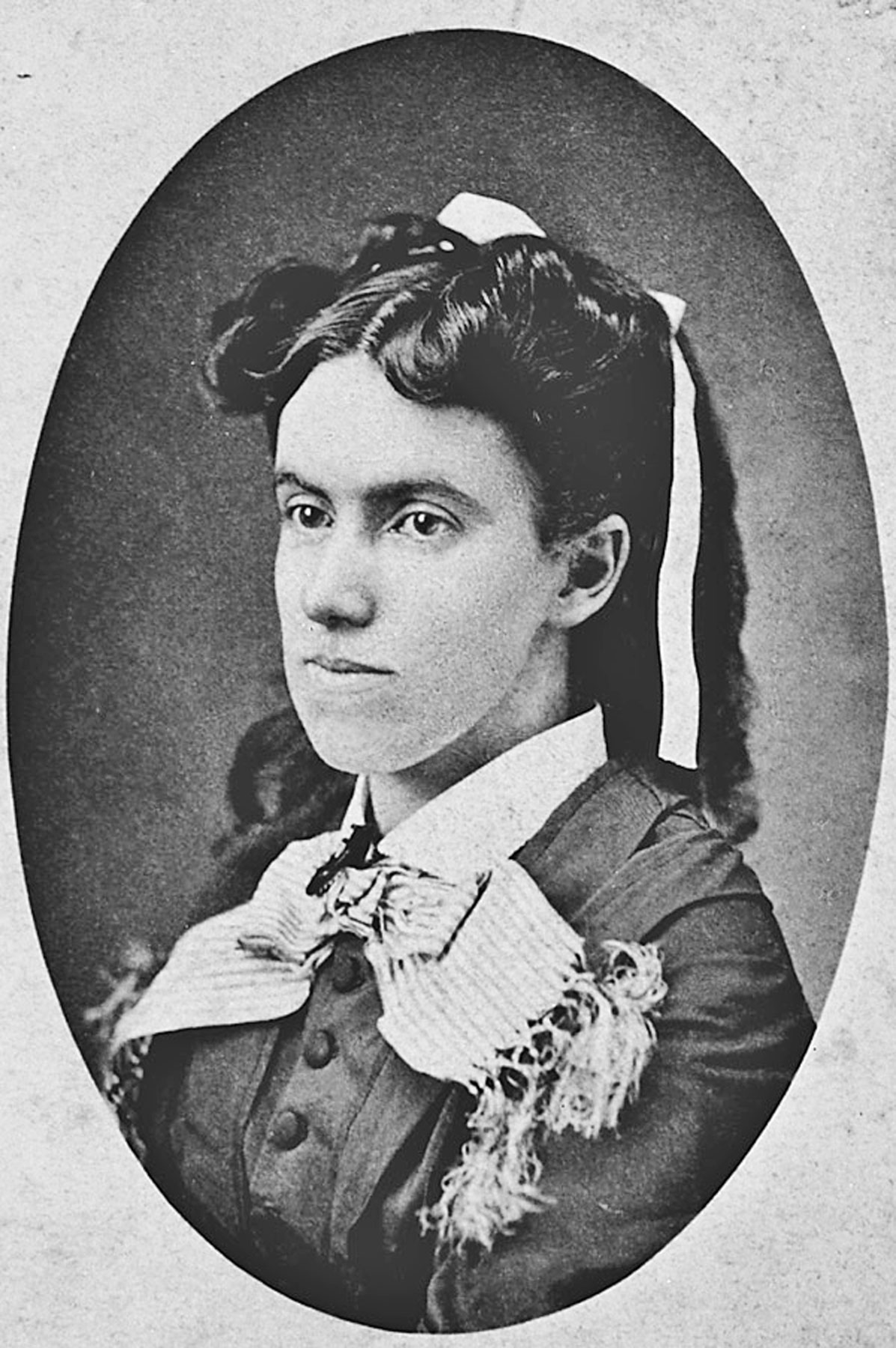
Lottie’s younger sister went to China as a missionary, and soon after, Lottie, too, felt God calling her there. So in 1873, at thirty-two years old, Lottie left her Southern life behind to minister in Tonchow, northern China, where she taught at a girls’ school. She became an expert in speaking Chinese and adapted Chinese dress and customs. When she realized only women could reach Chinese women, she used her knitting and sewing skills to build their trust and forge relationships before introducing them to Jesus.
During the war in 1912, Lottie turned her home into a hostel to feed and care for the sick, sometimes foregoing food herself. She wrote home several times while ministering in China, urging Southern Baptists to be more involved in supporting mission work. Sadly, in her seventies, she grew ill and set to return home but died before reaching the States. Nonetheless, the four decades she worked in China laid the foundation for modern mission support among Southern Baptists.20
14. Paulina Dlamini (1858–1942)
The spread of Christianity in modern Africa is largely due to the faithful work of women like Paulina Dlamini. Paulina was the oldest daughter of an African Zulu chief who pledged young Paulina in marriage to the ascending Zulu king. This thirteen-year-old found herself in the king’s court and “women’s house,” where she came in contact with Christian missionaries whose message powerfully impacted the young girl. When British colonizers provoked a civil war, the Zulu king was forced into exile, which crushed Paulina’s family’s elevated status and wealth.
But Paulina’s time listening to those missionaries had convinced her of the good news of Jesus Christ, and she became an evangelist laser-focused on rebuilding the Zulu people. Early on, she shared the gospel with a British colonizer who had been severely beating his Zulu workers. He listened, stopped beating his workers, and became a Christian—and a key person in Paulina’s ministry. After seeing such a change in the colonizer’s life, the Zulu people were more receptive to Paulina’s message.21 Two of the new Zulu king’s wives converted, a result of Paulina’s preaching, and her partnership with Dutch missionaries birthed multiple congregations among the colonizers and the Zulu people.22
15. Tsai Su Juan (Christiana Tsai) (1890–1984)
Though Tsai Su Juan (“Christiana”) came from a well-known and wealthy family in China, she was an unhappy child who almost became a Buddhist nun.23 However, after she heard a preacher speak of Jesus at school, she put her faith in him—which enraged her family. After graduating, she was offered many jobs but declined them all to return home and be a witness for Jesus to her family, and fifty-five of them—including her mother, whose dramatic conversion set her free from an opium addiction—eventually came to faith.
Together with her mother and an American principal from Christiana’s school named Mary Leaman, the three had a thriving ministry in and around Jiangxu. But a bout with malaria confined Christiana to a bed in a dark room for long periods. From there, she continued to minister and write articles. Christiana later wrote about that experience: “My bed is not a prison, but a training school; the Holy Spirit is my mentor, and my visitors are my homework.”24
Over many years, thousands of people visited Christiana, known as the “Queen of the Dark Chamber,” to hear her articulate the Word of God. After great suffering in World War II, Mary Leaman brought Christiana with her to the United States, where Christiana wrote her autobiography, Queen of the Dark Chamber, which was translated into fifty languages. Her life and writing challenged and inspired countless others to live for Jesus and serve him with deep devotion.
16. Amy Carmichael (1867–1951)
Born in Ireland to devout Scottish Presbyterian parents, Amy Carmichael converted to Christianity when she was 14. Amy joined the Church Missionary Society and served in Japan for 15 months before heading to Bangalore, India in 1895, where she found her lifelong vocation. There she founded Dohnavur Fellowship, which provided a sanctuary for over 1,000 children whose parents had dedicated their children to the gods and lived in moral and spiritual danger. Two of her popular books include The Gold Cord and Things as They Are: Mission Work in Southern India. A fall left her bedridden for the final two decades of her life, yet she published 16 additional books before her death in India in 1951.
17. Corrie ten Boom (1892–1983)
Born in Holland to a Christian family, Corrie ten Boom lived a quiet life until World War II broke out, and the ten Boom family became involved in resistance efforts. Her family’s home in Haarlem, the Netherlands, became a hiding place for six Jews—Corrie using her job as a watchmaker in her father’s shop as a cover.25
Nazi’s raided the house on February 28, 1944, and Corrie, her father, and her sister, Betsie, were arrested and taken to concentration camps. Despite her deplorable living situation, Corrie held Bible studies in Barracks 28, which “became known throughout the camp as ‘the crazy place, where they hope.’”26
Corrie survived the Holocaust, and her story and Christian witness resulted in a prolific writing and speaking ministry. Her book The Hiding Place told of her family’s wartime activities and became a bestseller. Before death in 1983, she had carried the gospel to more than sixty countries.
18. Gladys Aylward (1902–1970)

For some time, Gladys lived in Yangcheng, where she learned the language—and the favor of the mandarin who trusted her with helping to enforce the local government’s edict against binding young girls’ feet.27 The mandarin was so impacted by how Gladys cared for abandoned children and provided medical care to people who needed it that he eventually became a Christian.28 Gladys received Chinese citizenship in 1936, but in 1938, war broke out with Japan, hitting Yangcheng hard. Without hesitation, Gladys transported hundreds of orphans impacted by the war by foot through the mountains of China to a river where boats waited to cross the children to safety in Fefung (a story that inspired the movie The Inn of the Sixth Happiness).
Gladys came home to London briefly to recover from an illness but returned to Asia in the 1940s, opened an orphanage, and worked with needy children until her death. Though she lacked the typical resources required for mission work, Gladys is an inspiring example of what it looks like to trust God’s still small voice—even when what he’s saying seems impossible.
19. Irena Sendler (1910–2008)

Putting themselves at great risk, Irena and a handful of others worked to save as many Jewish children as they could from death in the ghetto or deportation to concentration camps. They started with orphans, hiding them in caskets or potato sacks or transporting them in ambulances or through tunnels to get them out unseen. Once out, Irena helped place them in convents or with non-Jewish families. As the situation worsened, she worked with Jewish parents in the ghetto to get their children to safety. More than 2,500 children were rescued, and it’s estimated Irena personally helped around 400.29 Her life is an example of one who trusted God to do the impossible at great risk to her own life.
20. Bilquis Sheikh (1926–1997)
Bilquis Sheikh, the wife of a high-ranking government official in Pakistan, gave her life to Jesus Christ in 1966. Born in Punjab, Pakistan, to an elite Muslim family, she never fully embraced her family’s religion. Curious about the Jesus she read about in the Quran, she asked her Christian chauffeur to bring her a Bible—and Romans 9:25–26 caught her attention. She approached two local American missionaries who answered her questions and explained the gospel, and soon after, Sheikh experienced a series of dreams and visions that confirmed her decision to convert. News of her conversion reached her family who considered her a traitor and an infidel and shunned her. After she was threatened and her home torched, she fled to the United States where she began speaking about her experience and love for Jesus in churches. Years later her health declined and she returned to Pakistan, where she died in 1997.30
***
Learn more about prominent women in church history in Carrying on the Great Tradition: Rediscovering Strong Christian Women of History by Jennifer Dunham. You can also study what life was like for women in ancient biblical times with the two-course Women in the Biblical World Bundle (2 courses).
Related Articles
- The Not-So-Hidden History of Faithful Christian Women
- Women in Theology: Why the Church Needs Female Theologians
- Bible Truth about Women’s Worth: Live with Elyse Fitzpatrick & Eric Schumacher
- Logos Live: Leanne Dzubinski & Anneke Stasson on Women in the Mission of the Church
- Why Did Jesus Appear to the Women Instead of the Disciples?
- 30 Inspiring Elisabeth Elliot Quotes
Related Resources
- Women in the World of the Earliest Christians
- 40 Questions about Women in Ministry (40 Questions Series)
- Christian Women in the Patristic World
- Women in the Mission of the Church: Their Opportunities and Obstacles throughout Christian History
- Chinese Whispers: The Gladys Aylward Story
- Lottie Moon: Changing China for Christ
- Barry, John D. Faithlife Study Bible, 16:1, “Phoebe,” (Lexham Press, Bellingham, WA) 2016.
- Barry, John D. “Phoebe.”
- F. L. Cross and E. A. Livingstone, “St. Thecla,” in Oxford Dictionary of the Early Church (Oxford: Oxford University Press, 1957), 360.
- Dunham, Jennifer. Carrying On the Great Tradition Rediscovering Strong Christian Women of History, “Perpetua,” (Christians for Biblical Equality, 2012), 4.
- Tucker, Ruth A. Daughters of the Church: Women and Ministry from New Testament Times to the Present, “Perpetua” (Zondervan), 2010.
- Hammack, Mary L. A Dictionary of Women in Church History (Baker Publishing), 1997.
- Cross and Livingstone, “St. Thecla,” 360.
- “Poor Clare Sisters,” Poor Clare Sisters, http://poorclare.org/.
- “Holy Quotes from St. Clare of Assisi,” Franciscan Media, February 17, 2023, https://www.franciscanmedia.org/franciscan-spirit-blog/holy-quotes-from-st-clare-of-assisi/.
- Dunham, Jennifer. Carrying On the Great Tradition Rediscovering Strong Christian Women of History, “Margaret Fell Fox,” (Christians for Biblical Equality, 2012), 11.
- Dunham, Jennifer. “Margaret,” 11.
- Dunham, Jennifer. Carrying On the Great Tradition Rediscovering Strong Christian Women of History, “Kateri Tekakwitha,” (Christians for Biblical Equality, 2012), 15.
- Galli, Mark, and Ted Olsen. 131 Christians Everyone Should Know. (Nashville, TN: Broadman & Holman), 2000.
- “Sojourner Truth: “Ain’t I A Woman?” National Parks Service. US Department of the Interior. Accessed March 9, 2020. https://www.nps.gov/articles/sojourner-truth.htm.
- Mark Galli and Ted Olsen, “Introduction,” in 131 Christians Everyone Should Know (Nashville: Broadman & Holman Publishers, 2000), 161.
- Galli and Olsen, “Introduction,” 161.
- “Fanny Crosby—Blind Hymn Writer,” YesterYear Once More, June 19, 2009, https://yesteryearsnews.wordpress.com/2009/06/19/fanny-crosby-blind-hymn-writer/.
- Galli and Olsen, “Introduction,” 298–302.
- “Lottie Moon: The Southern Belle Who Went to China,” Christianity.com, December 15, 2022, https://www.christianity.com/wiki/history/lottie-moon-the-southern-belle-who-went-to-china-11636188.html.
- “Who Is Lottie Moon?” Baptist Resource Network, March 5, 2021.
- Kimberly Dickson, “Women in Scripture and Mission: Paulina Dlamini,” CBE International, August 1, 2022, https://www.cbeinternational.org/resource/women-in-scripture-and-mission-paulina-dlamini/.
- Dickson, “Women in Scripture and Mission.”
- “The Lives of Missionaries,” International Missions Project, July 28, 2014.
- “Lives of Missionaries.”
-
United States Holocaust Memorial Museum (Washington, DC), Accessed March 3, 2020. https://encyclopedia.ushmm.org/content/en/article/corrie-ten-boom.
- Tucker, Ruth A. Daughters of the Church: Women and Ministry from New Testament Times to the Present, “Corrie ten Boom” (Zondervan), 2010.
- “Aylward, Gladys (1902-1970). British Missionary in China,” Boston University History of Missology, August 17, 2017. Accessed March 8, 2023.
- Linda Finlayson, “Who Was Gladys Aylward?” Ligonier Ministries, February 1, 2023, https://www.ligonier.org/learn/articles/missionary-gladys-aylward. Accessed March 8, 2023.
- “Irena Sendler,” Biography.com—A&E Networks Television, March 21, 2016. Accessed March 11, 2023.
- Sheikh, Bilquis, and Dick Schneider. I Dared to Call Him Father: the Miraculous Story of a Muslim Womans Encounter with God. Vereeniging, South Africa: Christian Art Publishers, 2016.

